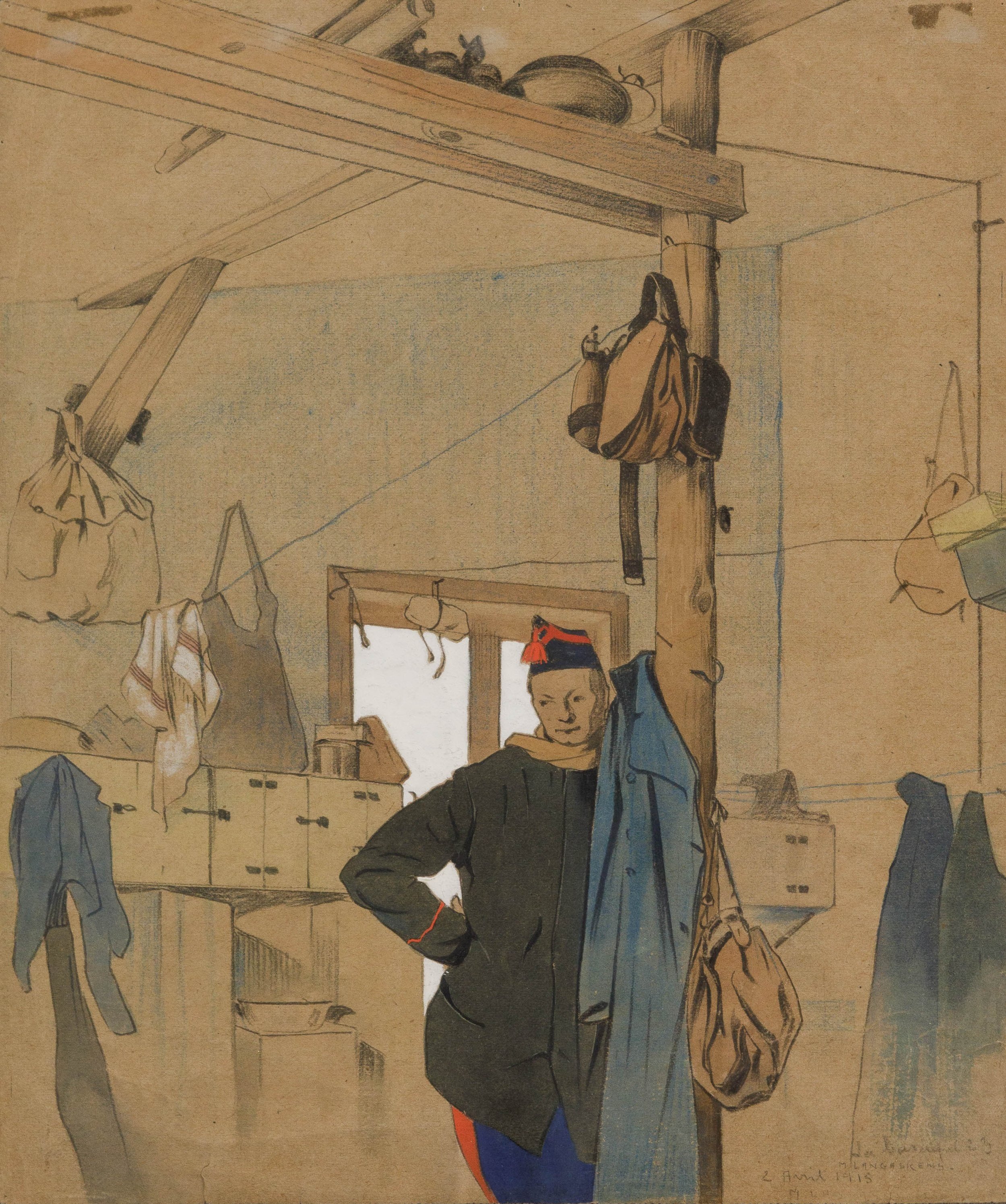Maurice Langaskens (1884-1946)



Maurice Langaskens (1884-1946)
Maurice Langaskens (1884-1946)
La Baraque 23
watercolor on paper 30 x 25,5 cm
signed 2 avril 1915
Maurice Langaskens (1884-1946)
From 1901 till 1905, Langaskens studied at the Royal academy of Brussels under Constant Montald, a famous decorative painter.
It is from his master that he inherited his weakness for monumental work.
After his military service in 1906 he leaves to France and more specifically Dijon.
The first appearance of Maurice Langaskens on the Art scene was the Brussels salon of 1907. He exhibited 3 works in the section of decorative arts. A year later he adhered the group ‘Pour l’Art’ where he became a frequent exhibitor. Around 1912 monumental commissions followed: the town hall of Zoutleeuw and a school in Schaerbeek. In 1914 unfortunately he left his work unfinished to join the war. That same year he was made a P.O.W. A few days later, he arrives in Germany, where he staid subsequently in the camps of Sennelager, Münsterlager and Göttingen. Here he made numerous studies drawings and paintings, which is his best-known and most sensitive work. By their true realism and the quality of their execution, but also by the feelings they express, these works transcendent their mere documentative value.
After returning to Belgium, in 1918, he exposes 82 of his war works in the Galery Sneyers in Brussels. In 1920, he becomes a founding member of the group ‘L’Art Monumental. Like his colleagues, Jean Delville, Constant Montald, Albert Ciamberlani and Emile Fabry, he judges painting and sculpture are mere supplements of architecture.
In 1930, a retrospective exhibition was held in the Galerie Artes in Brussels with over 60 works. Between 1934 and 1935 he contributes at the decoration of the theatre of Leuven with other members of the group, like Géo Verbanck Omer Dierckx and Constant Montald. He continues to participate at the yearly exhibitions of the group Pour l’Art, where he shows more and more of his graphic work.
We feel in his style of painting that it is related with his graphical work.
The way he draws his line in a painting or drawing, resembles that of the scratched line in the copper plate. He uses a certain impasto in his oil works that reveal a graphical approach to painting.
In 1946 the painter dies in his home in Schaerbeek. In 1979, after the death of his widow, the content of the studio was sold at auction in the Galerie Nova Brussels.
Exhibitions
Kunstenaars aan het Ijzerfront
Gemeentelijk Cultureel centrum, Temse, Juin 1914
During the first World War, Langaskens was consequently imprisoned in the concentration camps the Sennelager, the Münsterlager (from November 1914 on) and the camp of Göttingen (May 1916).
Artistically, this was a very prolific period, in which he made his most strongest works.
He works on the material at hand, handkerchiefs, planks, cigar boxes, potato bags sewn together.
Apart from the numerous self portraits and portraits of his compagnons, he captures the camp life in striking way.
Literature
Maurice Langaskens 1884-1946
exhibition catalogue, In Flanders Field Museum, Ieper, 18 October 2003 - 18 April 2004, ed. Snoeck, 2003